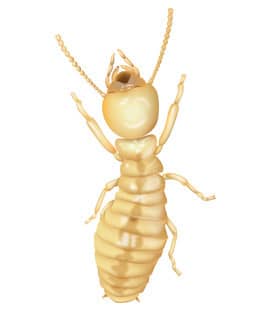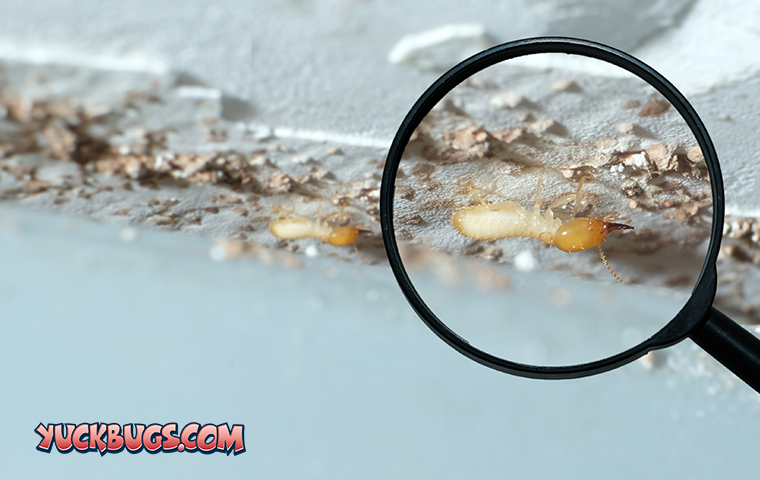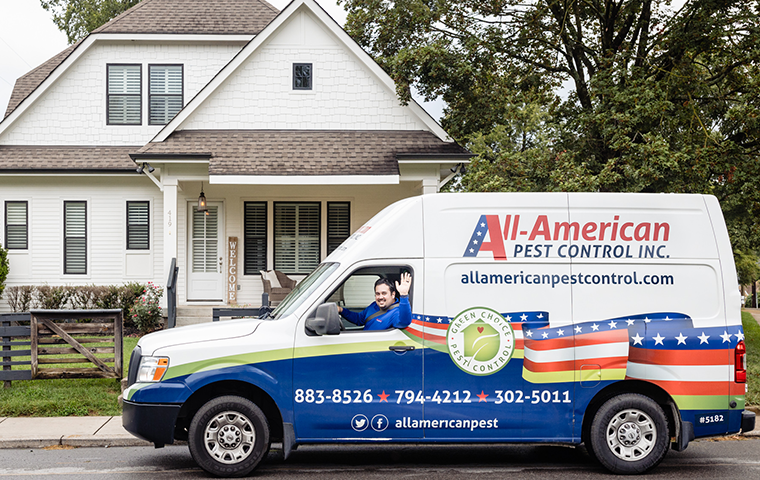What Are Termites?

Eastern subterranean termites are destructive wood-destroying insects commonly found in Nashville, throughout Middle Tennessee, and around most of the U.S.
Termites are social insects that live underground in large colonies with three distinct divisions of labor: workers, soldiers, and reproductives. It is rare to see worker and soldier termites because these termites stay in the ground and rarely come out in the open. However, it’s good to know what they look like in case you ever come across them.
Worker termites are creamy white in color, about an eighth of an inch long, and have soft bodies. The soldiers look about the same as termite workers except they have elongated yellow heads and large jaws to protect the nest. The reproductive termites, or kings and queens, are dark brown or black and range in size from a third of an inch to an inch in length. They have two pairs of translucent wings that break off after they mate. Reproductive termites are often mistaken for carpenter ants.
Are Termites Dangerous?
Termites do not bite, sting, or carry diseases that can be transferred to humans. They can, however, be extremely dangerous to the structural integrity of your home.
Termites live in large colonies with thousands to millions of members. If they get into your home, they will chew tunnels and nests throughout the wooden structures in your house, causing massive amounts of damage to the wood in your home. This can lead to costly amounts of structural damage.
Throughout the United States, termites are responsible for causing over $5 billion in structural damage every year. Most homeowners’ insurance does not cover termite damage, which leaves you fully responsible for repair costs. That makes a termite infestation not only dangerous to your home, but also dangerous to your wallet.
What Causes Termites?
Termites feed on the cellulose in wood, leaves, and soil. Wood is especially attractive to them if it is moist or has water damage. You will find termites in and around your home looking for these food sources.
When out in nature, termites actually play an important role in the ecosystem by breaking down rotting and dead trees. However, when they get near your house instead of in forested areas, they’ll end up finding their way inside. Even if the wooden elements in your house are dry and structurally sound, termites can and will infest them. If there is no easy way into your house, they’ll build mud tubes along your foundation walls to access the interior. Once inside, these pests can remain active all year long, which only intensifies their ability to damage your house.
How To Prevent A Termite Infestation
Termites feed on wood, leaves, and soil. Because these items are found around most homes and properties, preventing a termite infestation is very difficult. If you suspect termite activity, your best course of action is to call for professional help as soon as possible.
However, it can help to implement the following preventative measures around your house:
-
Replace white outdoor lights with yellow bulbs so you don’t attract swarmer termites
-
Reduce moisture in and around your house by fixing leaks and drips and ensuring your property has proper drainage
-
Repair and replace water-damaged or rotting wood
-
Store firewood away from your house and up off the ground
-
Eliminate areas where wood comes into contact with the ground, such as fence posts that are installed directly into the soil
Although these preventative measures can help, they will not stop a termite infestation. The only sure way to stop termites is with 24/7 termite protection from All-American Pest Control.
We're Ready To Help
Call Our Office or Complete the Form To Get Your Customized Quote
Frequently Asked Questions
Can I Get Rid of Termites Myself?
Termites are tough to eliminate from your property without professional help. Termites are rarely seen outside of their tunnels and nesting areas, making it difficult to assess how extensive the damage truly is. If you do not completely rid your property of all the termites, you will have a re-infestation. At the first sign of termites in your home or business, contact All-American Pest Control.
What Are The Signs of Termite Damage?
Termite damage is usually very subtle because most of it occurs out of sight. You have to be extremely vigilant to identify termite damage. Some of the signs include:
-
Seeing a large swarm of reproductive termites or their discarded wings
-
Finding small holes in exposed wood and little piles of frass (a sawdust-like material) below these holes
-
Hearing a hollow sound when knocking on wood
-
Finding mud tubes on your foundation walls
-
Noticing peeling wallpaper or bubbling paint on your walls
-
Having doors or windows that don’t open or close easily
If you notice any of these signs of a termite infestation, contact All-American Pest Control right away. The longer you wait, the worse the damage can become.
Why Choose All-American Pest Control?
With over 60 years of experience, we know the time, effort, and commitment it takes to solve your termite problem. With All-American Pest Control, you’ll receive services, a serious commitment, and thorough treatments from our trained termite experts serving Nashville and Middle Tennessee.
Termite control is essential in Middle Tennessee. All-American Pest Control provides the most effective termite control available with the Sentricon® Termite Colony Elimination System. This eco-friendly system is proven to stop termites before they get into your home. For non-stop termite protection, contact All-American. Whether you want termite control as a stand-alone service or prefer to combine it with our effective home pest control, we offer the services you’re looking for.
Helpful Articles About Termites
How Dangerous Are Termites In Tennessee?
How To Tell If Your Nashville Home Has A Termite Problem
Three Early Warning Signs Of Termites To Watch For Around Your Nashville Property
Four Signs Your Nashville Home May Have A Termite Problem
The Ultimate Termite Prevention Checklist For Tennessee Residents
How Effective Are Termite Traps And Baiting Stations?
The Remarkable History Of Sentricon With Always Active
Why Year-Round Termite Defense Is Essential For Nashville Residents
The Sentricon® Termite Colony Elimination System: Pros and Cons
Do I Need Termite Protection For My New Nashville Home?
How Do Termite Traps Work Around Brentwood Properties?
Why You Should Get Annual Termite Inspections For Your Nashville Home
What Our Pros Look For During A Hendersonville Termite Inspection
How To Get A Termite Damage Repair Warranty Or Guarantee For Your Home
 1231 Reviews
1231 Reviews








